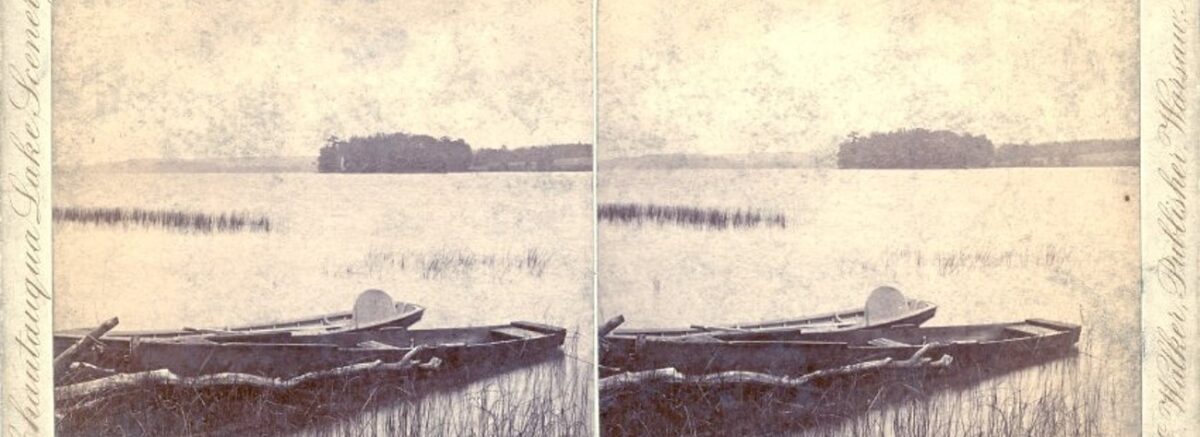An 1878 photograph of Chautauqua Lake reveals a shoreline that is very different from the one we recognize today. The boating options have certainly changed. This view from Bemus Point over to Long Point records a shoreline of growing vegetation, even out into the deeper water. No one can turn back the hands of time and humans have, undeniably, changed this landscape. Protection of our waters remains our mission and we believe the services performed by functioning wetlands are a necessary part for the overall health of Chautauqua Lake and the Conewango Creek watershed.
What is a wetland?
Wetlands are areas of land that are covered or saturated with water either year-round or seasonally. Wetlands include marshes, swamps and bogs. Wetlands can be transitional zones between open water (lake) and dry land (upland areas). They are characterized by containing wetland-adapted plants (sometimes referred to as hydrophytes) and hydric soils (e.g., soils that form in response to low-oxygen conditions resulting from prolonged saturation).
Why are wetlands valuable?
Wetlands contribute to climate resilience because they can store carbon in the soil and vegetation. Wetlands also provide storage for excess water from snowmelt and precipitation thereby reducing the potential for flooding. Wetlands provide habitats for rare plants and animals. And wetland vegetation and soil filter water, acting as a purification system,and improve water quality. In our region, wetlands can store nutrients that otherwise might enter Chautauqua Lake andincrease the already very high levels of nutrients (especially nitrogen and phosphorus). Wetlands can also reduce the amount of sediment entering the lake. These services performed by wetlands come to all of us completely free of charge!
What changes are in store for wetlands in New York State?
Historically, wetlands have been undervalued and thus in many instances drained, filled, or dredged. As the many benefits of these habitats have become more recognized, regulatory safeguards have been put into place to retain them. Beginning January 1st of next year, these safeguards will be expanded in New York State with implementation of new criteria to enable Department of Conservation protection of more than 1 million acres of wetlands currently not included in formal state maps as well as smaller wetlands of “unusual importance” deemed to have met at least 1 of 11 new criteria. Beginning in 2028, protections will expand further as the threshold for regulatory protections is decreased from 12.4 to 7.4 acres.
Wetlands and Climate Change
Whereas wetlands play a role in mitigating climate change by storing carbon, they are also at risk of suffering rapid degradation and reductions, even disappearance, as a result of climate change. Coastal wetlands are facing sea-level rise. And inland freshwater wetlands such as those fringing and near Chautauqua Lake are at risk from climate-driven changes in precipitation, evaporation, and surface and groundwater inflow and outflow as well as changes in species composition.
Learn more about wetlands
“Keep the Lake a Lake” post by the Chautauqua Watershed Conservancy
Short overview of wetlands and possible changes from DEC’s recent efforts:
February/ March issue of DEC Conservationist Magazine featuring “It’s A Wetland” article on Page 12:

